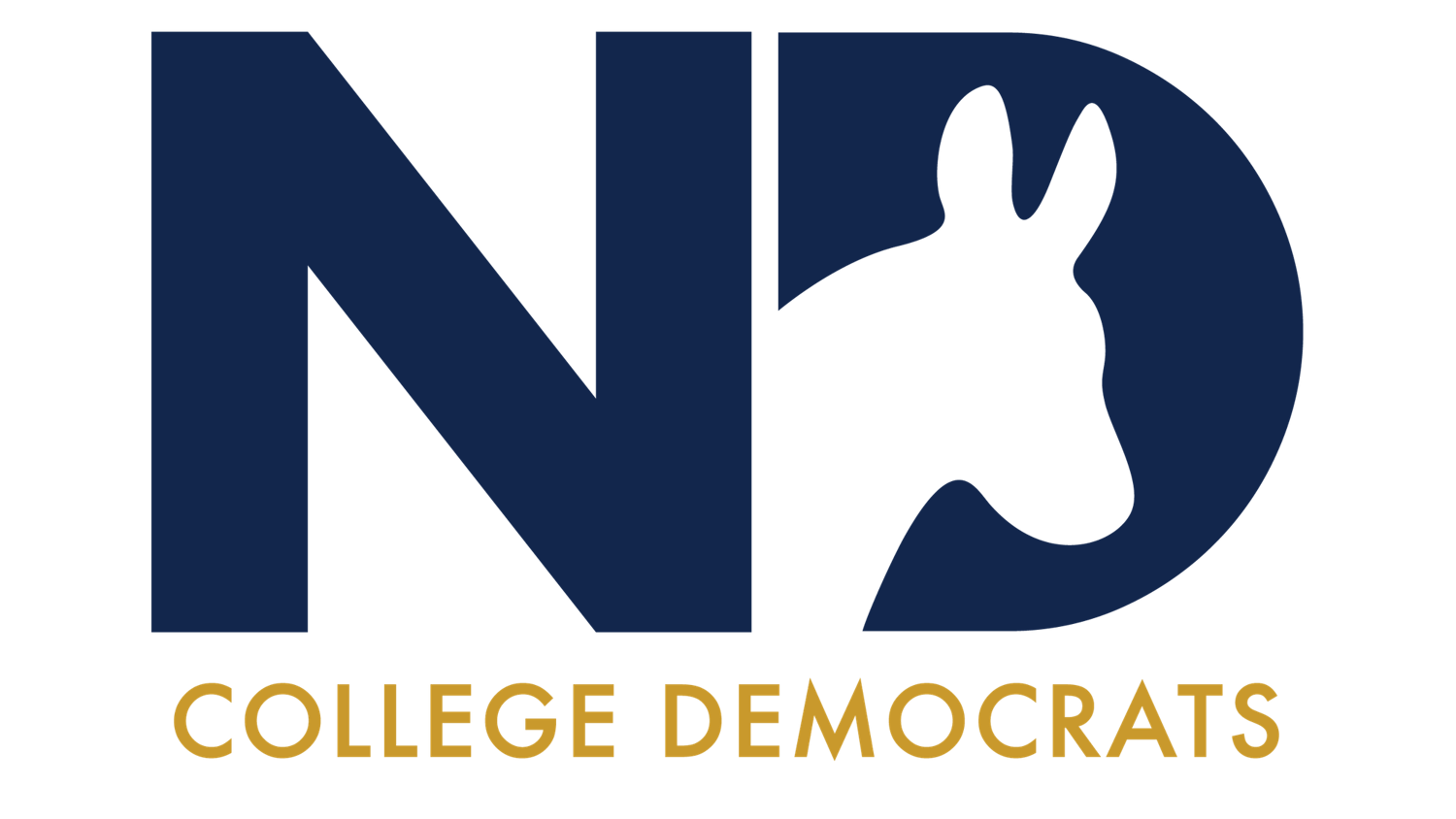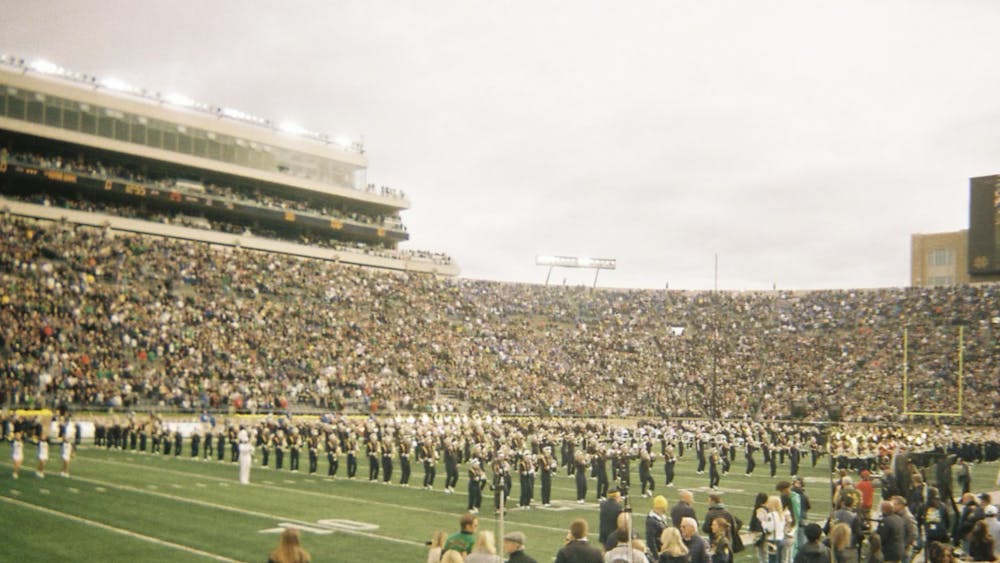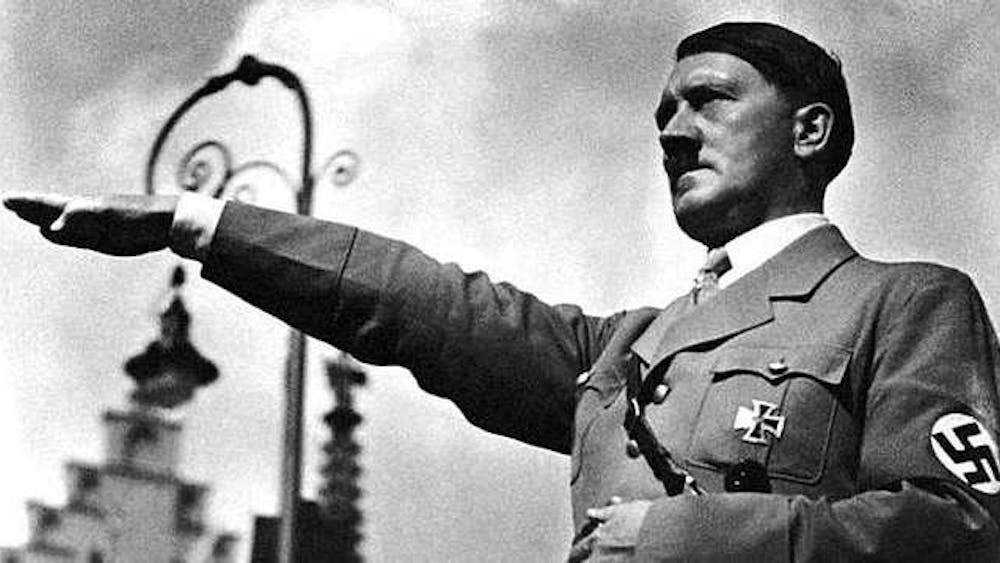When the University of Notre Dame announced its intention to attach state-of-the-art academic buildings and a student-life center designed with an exterior skin inspired by its tradition-rich campus to the bare concrete and brick exterior of its iconic football stadium, hundreds of newspapers and other media outlets described it as a bold solution for a university looking to integrate uses and to build without the sprawl that has turned other pedestrian-friendly places into ones where cars were king. Some accounts included the fact that the Campus Crossroads Project included rehearsal space for the Sacred Music at Notre Dame program, whose leadership includes the field’s top scholars, lured from Yale and Princeton to Our Lady’s University. For the most part, however, the accounts were mainly brick-and-mortar stories.
One exception was a remarkable piece by Matt Emerson, a 2008 alumnus of Notre Dame Law School and a teacher and administrator at Xavier College Preparatory, who writes “The Ignatian Educator” blog for the Jesuit magazine “America.” In his Feb. 3 article, “Lessons from Crossroads Project at Notre Dame,” Emerson acknowledged a predictable reaction but then stepped back to appreciate something much larger than Crossroads or even Notre Dame itself.
“When I first heard of the University’s intentions, my first reaction was similar to many others, a reflexive ‘wow’ at the magnificence of the project and a marveling at the cost,” Emerson wrote. “But it would be a mistake to see the Campus Crossroads Project as a mere expansion, as simply another sign of progress at a leading school. In implementing the Crossroads Project, Notre Dame is making a dramatic statement about the nature and future of education.”
To understand why, Emerson wrote, “one has to understand the landscape of modern education. An array of voices and forces are destabilizing the traditional university model, the model that has sustained Western culture for hundreds of years. This model features a centralized campus uniting academic departments, athletic programs and all the activities, offices and services that coalesce into a teeming community. It has evolved, today, into the model of large quads, dorm life and the frenzied game days of college sports. It’s the ‘total immersion’ model, whereby the learner fully situates him or herself in an educational community.”
Emerson said the model still defines American college life but that, in recent years, “the Hubble-like reach of the Internet has reconfigured the status quo,” with the rise of Massive Open Online Courses enabling “people from around the world to access lectures and coursework formerly offered only on a specific campus, often at a prohibitive cost."
Then Emerson poses a worrisome question: “If you can take Introduction to Psychology online for free, why sit in a 100-person lecture hall where the professor doesn’t know your name?” He quotes Nathan Harden in the January-February 2013 issue of “The American Interest” in saying that “The future looks like this: Access to college-level education will be free for everyone; the residential college campus will become largely obsolete; tens of thousands of professors will lose their jobs…”
So, with Crossroads, is Notre Dame boldly going where angels fear to tread? Or are we visionaries, as Emerson suggests? He writes: “Into this milieu, into the winds of this pessimism, comes the bold vision of Notre Dame. Notre Dame is one of the country’s most important Catholic schools. Notre Dame’s decisions influence not only other Catholic colleges, but high schools and primary schools. People look to Notre Dame for what Catholic education is and what it should be. What are some lessons, what are some insights, from Notre Dame’s Crossroads Project?
“1) Notre Dame’s Crossroads Project expresses total confidence in the viability of the residential college system; not necessarily in all residential college systems, but at least in the residential system that Notre Dame offers. Though online learning venues will continue to grow, Notre Dame is not abandoning the merits of being on campus. University officials believe that living and studying at Notre Dame delivers benefits that cannot be gained elsewhere — and that students will continue to pay for it. Notre Dame is optimistic that students will continue to seek the fellowship and edification which can only be gained in community. This doesn’t mean online alternatives have no value, but it does indicate Notre Dame’s belief that there is no substitute for an environment dedicated to a vibrant, consistent pursuit of truth, where scholars from disparate fields regularly converse with one another about the commonalties of their endeavors.
“2) The Campus Crossroads Project expresses the classic Catholic belief in the unity of knowledge. … Notre Dame Stadium will no longer stand in isolation as a cathedral of competition, as something apart from or better than the rest of the University. The football stadium will now be connected to Notre Dame’s Sacred Music program, which will be connected to the psychology and anthropology departments. Notre Dame is making a statement that all of these fields of study relate. … Connecting athletics, academics and spirituality signals to a visitor that Notre Dame football is set against a broader horizon of activity and meaning. Athletics, in other words, is one of many pursuits through which the human being realizes the dignity of his or her creation.”
Emerson doesn’t suggest that Notre Dame is alone in advancing the belief in the unity of knowledge, but, he says, “it’s really heartening to see an institution as well-known as Notre Dame undertake such a prominent, innovative move in service of an on-campus education and the unity of the human experience.“
Matt Emerson is, in fact, an Ignatian educator, who made these observations from afar, in Palm Desert, Calif., where he teaches and is director of admissions and advancement at Xavier. He found a calling in service to Catholic education to be apparently more spiritually-enriching than the commercial litigation he formerly practiced. One would think, however, he had spent hundreds of hours in the meetings of Notre Dame faculty, architects and others whose vision and aspirations he captured better than anyone who has written on the subject to date. Emerson thinks big, and he understands those at Notre Dame who think big, too.
Paul Browne is the vice president for public affairs and communications.
The views expressed in this column are those of the author and not necessarily those of The Observer.













